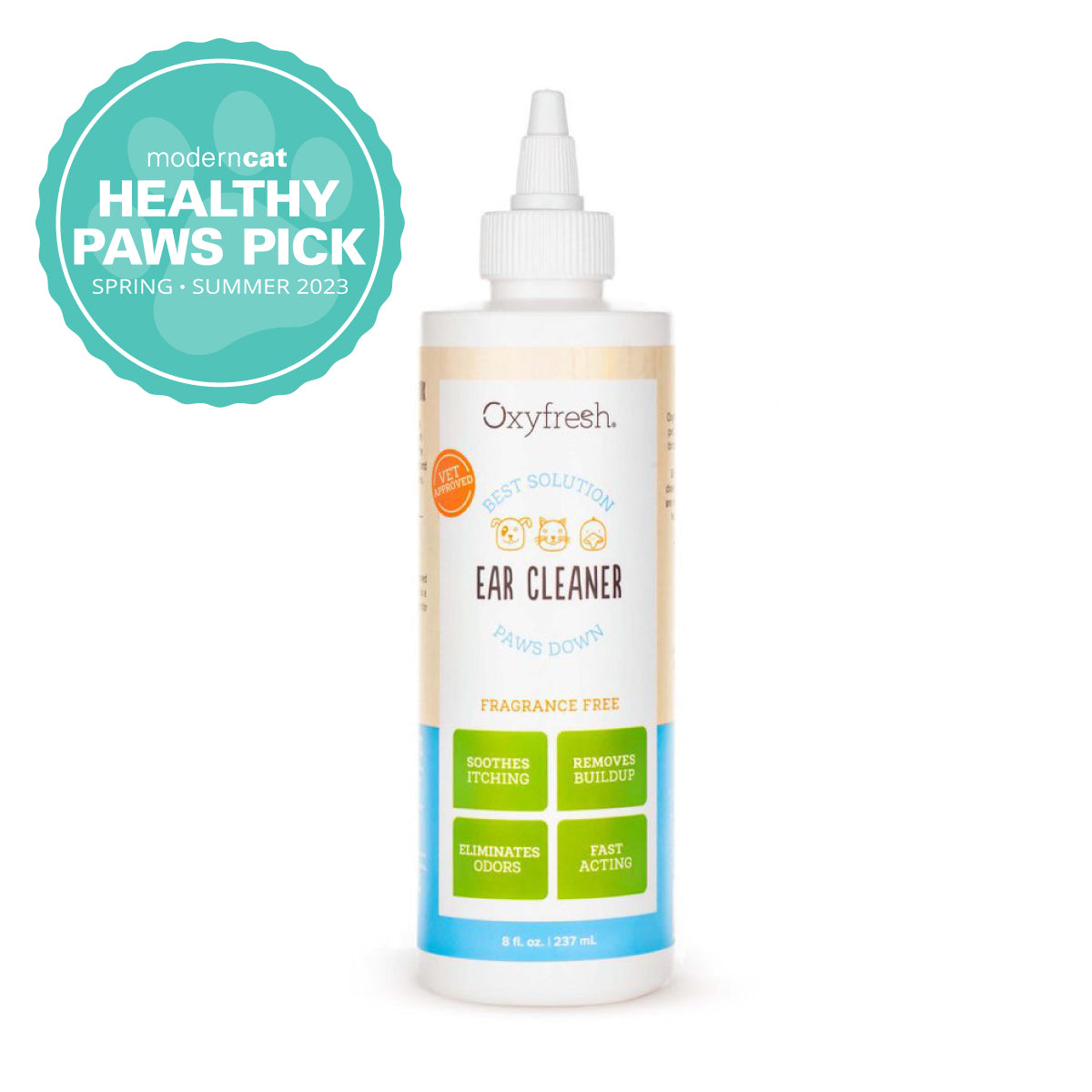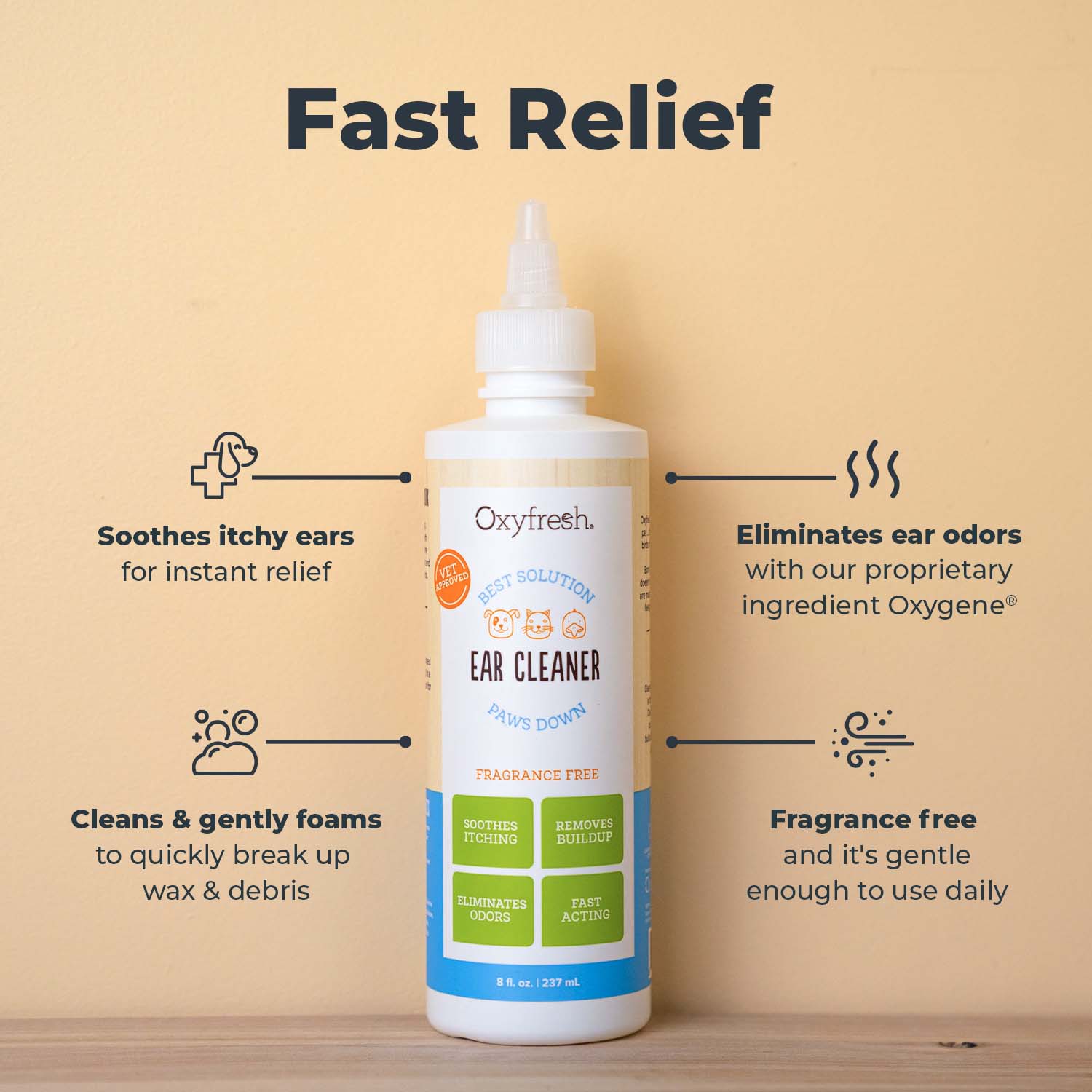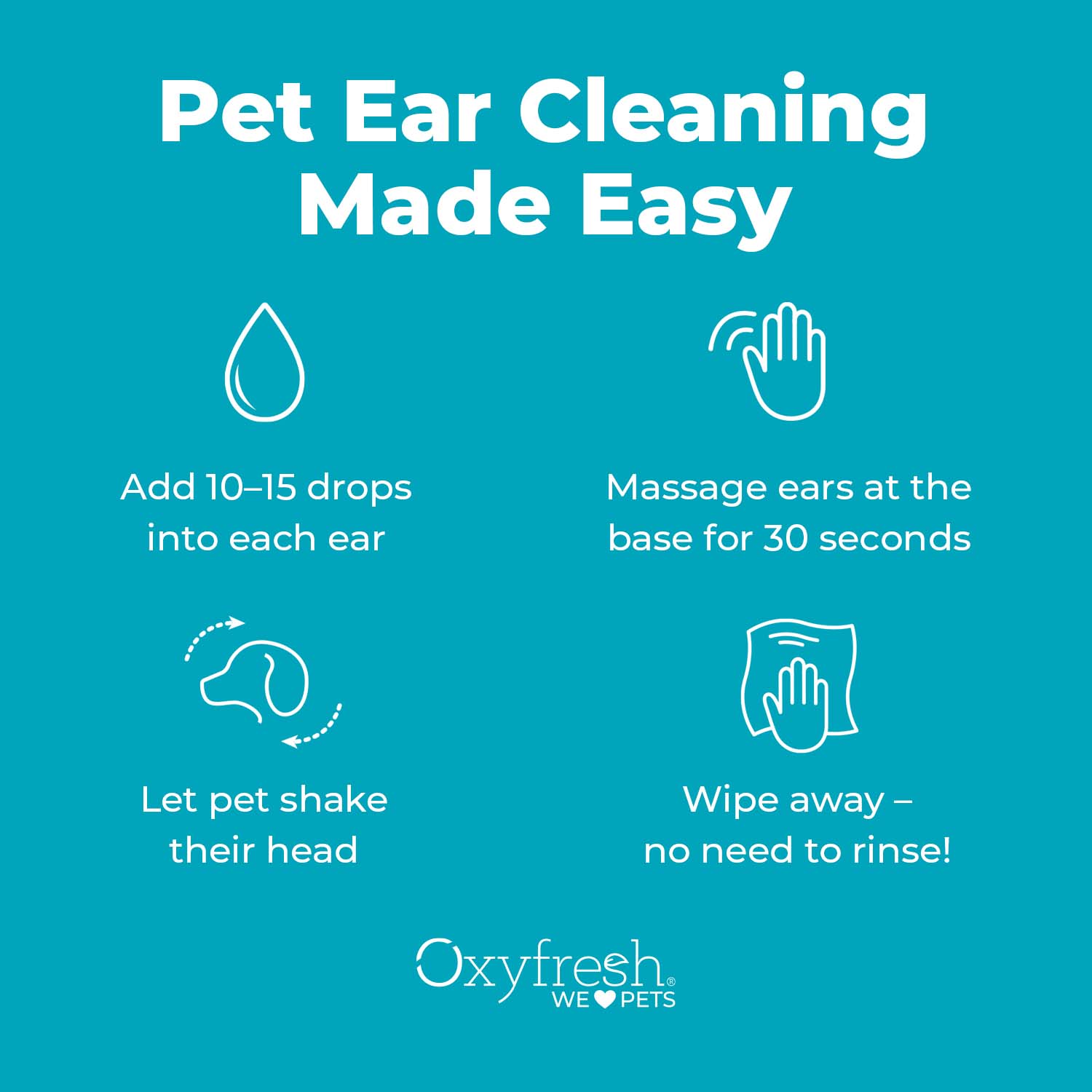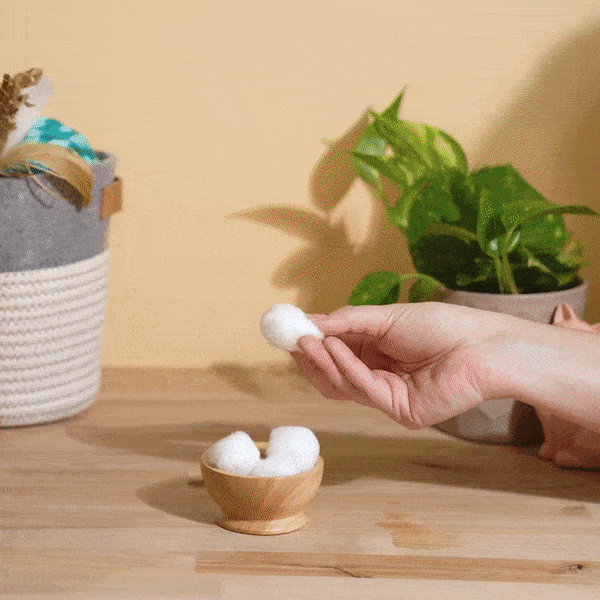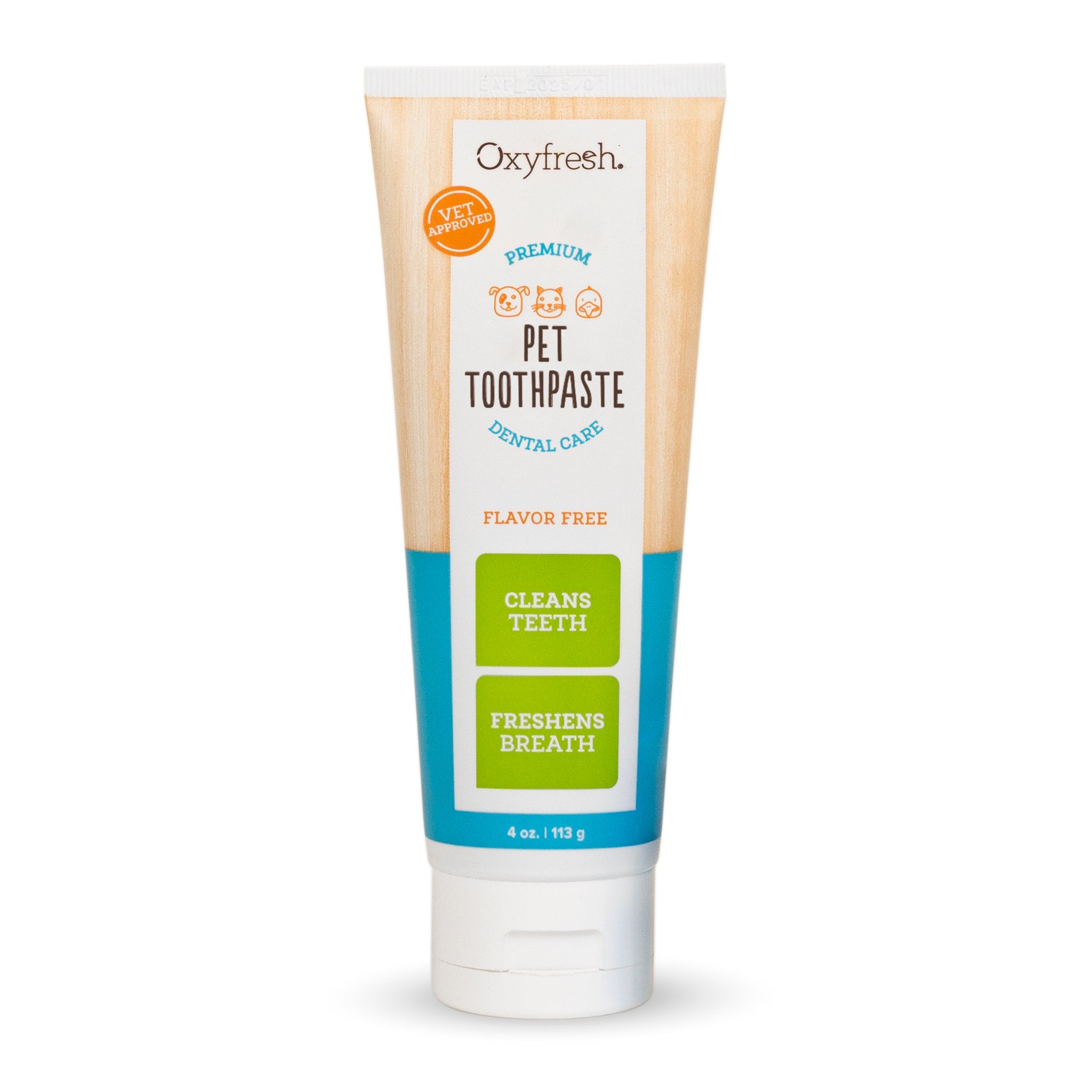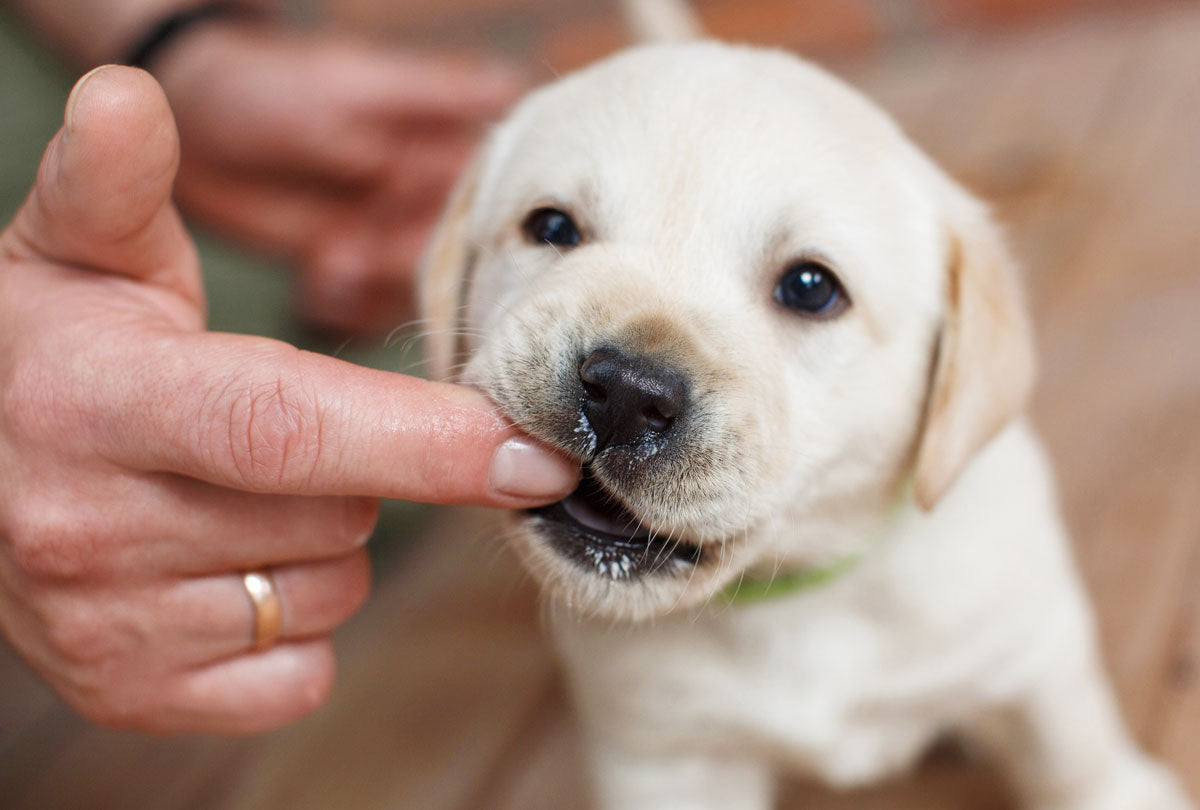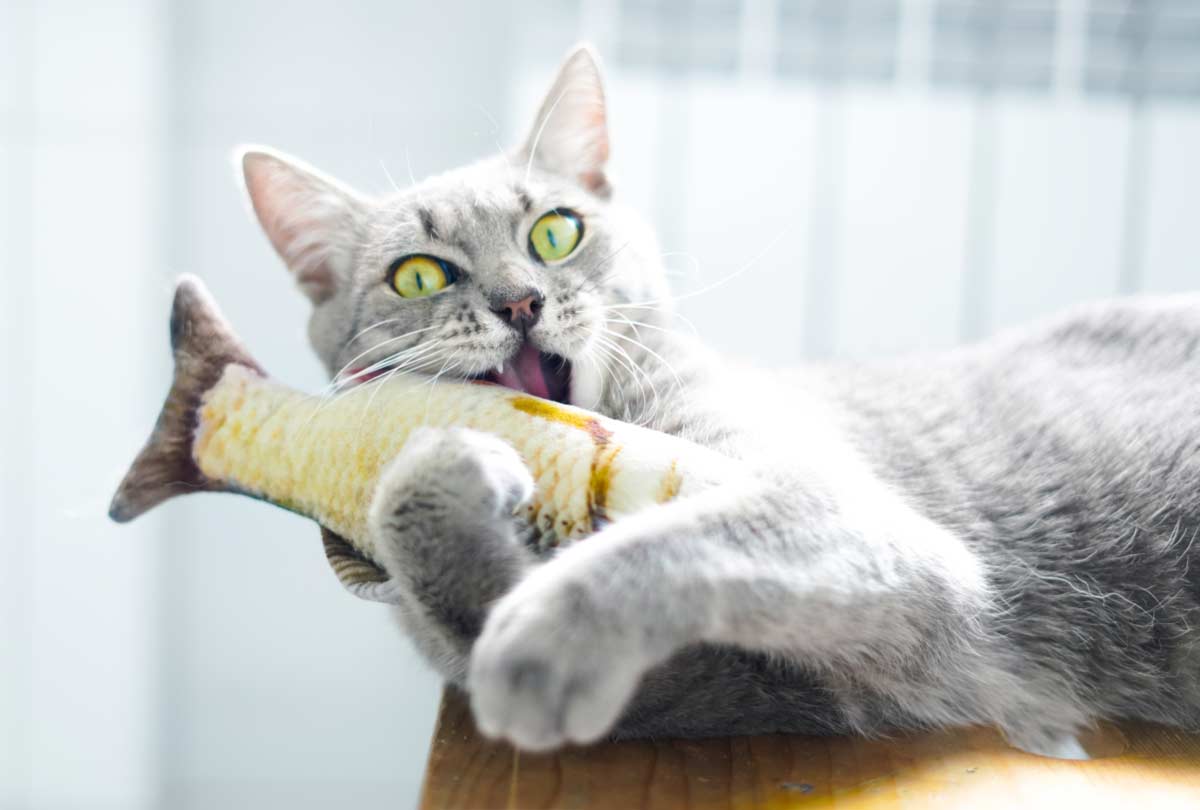What’s the deal with your cat’s constant head shaking? In this article, we’ll explore:
Cat Ear Yeast Infection: The Likely Suspect
A yeast infection in the ear is a primary cause for excessive head shaking in cats, especially if they’re also scratching at their ears. Yeast infection = ITCHY! Your nose can help you determine if there’s yeast multiplying out of control in your cat’s ears.
Yeasty cat ears may smell like:
- Moldy bread
- Overripe fruit
- Pungent cheese
Note: a yeasty smell by itself doesn’t always indicate an ear infection, but it can be a warning sign if you don’t clean their ears ASAP. Dirty ears are a leading cause of cat ear infections, as are factors like poor diet, allergies, or any condition that weakens the immune system. (We’ve got just the thing to clean their ears!) Watch for other signs of infection.
Signs of a yeast infection in a cat’s ears
- Heavy wax buildup
- Foul ear odor
- Excessive head shaking
- Ears hot to the touch
- Sensitivity to ear touch
- Red or swollen ear (normal is light pink)
- Itchy ears (scratching/rubbing)
Important: cat ear infections rarely clear up on their own and usually worsen if untreated, potentially causing hearing loss, balance problems or ruptured eardrums. See your vet if you notice these symptoms.
Other Causes of Cat Shaking Head
Ear Mites
Common in kittens, cat ear mites cause intense itching and head shaking. Look for crumbly black debris like coffee grounds. Rub some on white paper and shine a light; moving white specks are the mites. Vets typically prescribe a topical.
Pro tip: start with a clean ear using a gentle, alcohol‑free ear cleaner so medication can penetrate.
Allergies
Allergies (pollen, environmental irritants, insect bites, foods) often cause intense itching around the ears and head and can lead to infection. Consult your vet.
Insect Bites
Outdoor cats can get bites that trigger itching, head shaking, swelling, inflammation or hives. Discuss flea‑control and treatment options with your vet.
Polyps
Soft tissue growths deep in the ear canal or nasal cavity may affect balance and cause sneezing, noisy breathing, runny nose, and droopy eyelids. Usually benign, but may require surgery.
Foreign Materials
Rarely, a blade of grass, seed or hair can lodge in the ear. Vets remove these, often under sedation.
Ear Hematoma
“Pillow ear” results from vigorous head shaking or scratching. The ear looks puffy/soft; a vet will need to drain it.
Is Cat Shaking Head Neurological?
Head shaking is intentional (relief‑seeking); tremors are involuntary. Tremors can stem from neurological/neuromuscular conditions or:
- Dental disease
- Brain tumors
- Pain or injury
- Toxin exposure
- Devon Rex myopathy
- Feline infectious peritonitis
- Hyperesthesia syndrome
- Anxiety, stress or excitement
Concerned? See your veterinarian.
Prevention & Relief for When Cat Keeps Shaking Head
If no medical problem is present, the #1 prevention (and relief) is clean ears. This helps prevent yeast overgrowth and wax buildup that can lead to infection.
Best practice: inspect ears weekly to decide if cleaning is needed — including a quick sniff.
- Odor: zero to minimal.
- Wax: a little is normal; abundant wax can smell and invite infection. Color should be light to medium brown with soft consistency.
What to Use to Clean Your Cat’s Ears
Avoid DIY cleaners (vinegar, alcohol, essential oils, peroxide). They sting, burn, or upset cats.
Oxyfresh Advanced Pet Ear Cleaner is hypoallergenic and 100% free of alcohol, peroxides, and fragrances for a safe, gentle clean every time. It neutralizes odors and loosens wax/debris for instant relief.
How to Clean Cat Ears in 6 Simple Steps
#1. Gather Your Supplies
- Oxyfresh Pet Ear Cleaner
- Cotton balls or pads (no Q‑tips)
- Treats (build positive association)
#2. Position Your Cat
Position facing away and hold their body to yours, or have a helper hold from behind. A towel “burrito” can calm and protect.
#3. Squeeze Cleaner Into Ear Canal
Gently pull back ear flap and fill the L‑shaped canal without inserting the tip.
#4. Massage Cat's Ears
Massage the base for 30 seconds to distribute solution and loosen debris (the squishy sound is normal).
#5. Wipe Away
Let your cat shake, then wipe excess with cotton balls until clean. Don’t insert fingers into the canal.
#6. Treat
Reward your kitty, then repeat on the other ear.
Pro Tip: If your cat dislikes liquid in the ear, soak a cotton ball with cleaner, place just at the opening, massage, then wipe.
Listen to What Your Cat’s Trying to Tell You
Head shaking and ear scratching are your cat’s way of saying their ears are irritated. Don’t ignore the signs. Help them find sweet relief with Oxyfresh Pet Ear Cleaner (and call the vet if you suspect infection). No stinging alcohol, no irritating fragrances — just a gentle, effective clean.


